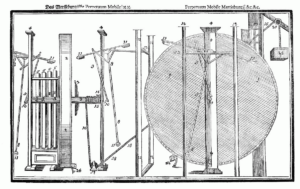While American culture has a historic love affair with both vehicles and excess, few examples match the absurdity of the Winnebago Heli-home.
Debuting in the late 1970s, this helicopter-turned-camper-van represented a short-lived publicity stunt for Winnebago. However, as YouTube historian Calum makes clear with an abundance of research, these impractical machines actually existed.
Unlike many other “technological marvels” that never came to fruition, Winnebago sold eight or nine of these flying camper vans and featured them extensively in its publicity. So put on your bell bottoms and cue the tape deck: YouTube’s latest history lesson will transport you back in time.

The S-58, which served as an important transport vehicle during the Vietnam War, continues to be used today. Photo: Creative Commons
War machine or family cruiser?
As with so many stories of American innovation, this one starts with a war.
In the late 1970s, the U.S. military was selling off a surplus of its S-58 Choctaw helicopters, designed by the famous innovator Igor Sikorsky. Though the Vietnam War saw many kinds of helicopters, the S-58s had proven themselves as valuable medical transports, thanks to their spacious interior.
As Calum explains in his video, the choppers’ simple design and reliability made them quite popular at the time. Some even became war machines, with add-on machine guns or rocket pods. Even today, many people will recognize the S-58’s unique shape as the helicopter chosen to transport U.S. presidents in Marine One.
Calum’s sleuthing even led him to discover that Winnebago’s brochure model of the Heli-home had actually received several bullet holes during combat.
YouTuber tracks down flying camper inventor
But making a Vietnam-era helicopter into a luxurious airborne camper van still wouldn’t be easy. In his video, Calum managed to track down the Heli-home’s original inventor: Fred Clark.
Winnebago essentially bought its first models of the Heli-home from Clark, a former U.S. Navy pilot who refurbished surplus helicopters through his company, Orlando Helicopter Airways.
When Clark decided to design and build a camper van from a helicopter, the S-58 was the obvious choice, Clark said in the interview.
“The Sikorsky was about the only thing I could think of that would ever work,” he said. “You could have a kitchen and a bathroom inside like a regular camper. It takes a pretty good-sized helicopter to be able to get all that inside.”

The interior of the Heli-home from a Winnebago brochure. Photo: Winnebago
The Winnebago Heli-home
When Winnebago finally unveiled its version of Clark’s original design, the finished product managed to live up to much of the seemingly over-the-top publicity, Calum said.
In fact, its features will be familiar to anyone who’s dreamed of buying a modern camper van.
The interior included lots of shag carpeting (of course), but also a galley that converted into a two-burner stove, and a seating area that transformed into small bunks. The Heli-home came with air conditioning and a furnace, plus a water heater for the bathroom, which contained a chemical toilet and shower.
While the interior included soundproofing (for obvious reasons), the Heli-home also had a sound system with AM/FM radio and cassette deck.

Igor Sikorsky was an important innovator in helicopter design. Photo: Creative Commons
A lasting legacy
Calum isn’t the only person to remain fascinated with the unlikely history of the Heli-home. The bizarre vehicle is frequently referenced in online forums and websites, although Calum’s video only includes one anecdote of someone actually using it for camping trips.
It was also out of reach for most. At the time, Winnebago’s Heli-home cost $300,000, or about $1.5 million today, adjusted for inflation.
Calum ends his video by quoting a 1942 New Yorker article from Igor Sikorsky, who imagined a day when Americans would fly helicopters as easily as they drive cars.
Who knew we’d watch free, documentary-quality videos on our phones even easier than doing either one.






